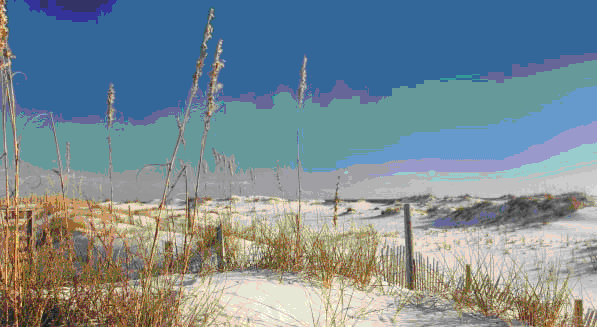The Healing Trauma Summit continued…..
- ‘When she began to focus on the accident and began to flood or disconnect, we immediately shifted her attention to after the accident was over when she felt out of harm’s way or safe again. This illustrates another key concept of Somatic Experiencing TM called “pendulation” or “looping”. Looping is a technique in which the therapist helps the client move back and forth between small pieces of the traumatic material and one of the client’s resources. This looping back and forth helps discharge the activation in the nervous system that emerges as the person slowly works through the traumatic event’. Diane Poole Heller & Laurence S. Heller, from: https://www.ibpj.org/issues/usabpj-articles/(3)_Heller__D._P.___Heller__L._S._Somatic_Experiencing._USABPJ_1.1__2002.pdf
2. Extract from an older post on Stephen Porges’ Polyvagal Theory
‘So as mentioned above, the ANS has in the past been conceptualized as consisting of two branches the sympathetic that activates fight-flight responses during threat and the parasympathetic nervous system, which refers to a calm state. However, Porges views the ANS as three hierarchically organized subsystems that determine our responses to environmental stimuli. Polyvagal theory consists of the word ‘poly’ that means many and vagal, which refers to the vagus nerve, a big cranial nerve that exits from the brainstem (information on the brainstem in the previous post) and sends information about the organs in the body to the central nervous system. The vagus nerve is part of the parasympathetic nervous system, but it can also shape the sympathetic and it regulates inner body feelings, pain thresholds, cortisol level secretion, the heart, face, lungs and abdominal viscera. Stephen Porges writes that ‘the vagus nerve directly supports the behaviours needed to engage or disengage with the environment’ (cited in Bridges, 2015) and if it is left on too long it can potentially lead to anxiety, discomfort and pain, insomnia, digestive problems, and many other health issues.
The three circuits/ subsystems of the ANS are the a) ventral parasympathetic branch of the vagus nerve (social engagement), which corresponds to optimal arousal b) the sympathetic system (mobilization), which corresponds to hyperarousal, and the c) dorsal parasympathetic branch of the vagus nerve (immobilization), which corresponds to hypoarousal. The most recent uniquely mammalian subsystem is the ventral vagus, which originates in the brainstem and determines the person’s consciousness. Porges calls this system the socialengagement system, because it provides us with the capacity to communicate more flexibly and it regulates areas in the body, like the heart and the muscles in our face and head that are used in social interaction, without mobilizing our more primitive defensive responses. Other scientists and researchers have referred to our capacity to tend and befriend, in times of stress, which elicits oxytocin release and activates the social engagement system that is embedded in our mammalian brain. This circuit has the capacity to down regulate stress responses. ‘The social engagement features, such as, prosody, facial expressivity, gesture within a quiet safe environment provide opportunities to help soothe…… and downregulate sympathetic activity, adrenal activity’ (Porges).
However, when we are threatened or stressed out and the social engagement system proves ineffective it is overridden by the sympathetic system, which activates fight-flight responses. We experience symptoms like shallow breathing, dry mouth, and our hypothalamus causes the secretion of increased levels of hormones like adrenaline and cortisol that increase arousal and facilitate mobilization. If we manage to fight or run from our predators or danger, hyperarousal may return to an optimal level once the danger has passed. But, ‘mobilization is not always possible and trauma is all about unsuccessful attempts to flea or fight’ (Stephen Porges). However, if both social engagement and fight-flight responses fail then the other branch of the parasympathetic nervous system, the dorsal branch of the vagus nerve is triggered into action by hypoxia, lack of oxygen in the body tissues, which causes immobilization, such as feigning death, behavioural shutdown and even syncope. This mode is regulated by the oldest branch of the vagus nerve, which we share with reptiles. Immobilization, bradycardia and apnoea are parts of this older reptilian defence system. For instance, in reptiles like lizards and snakes, immobilization is the primary fear defence strategy. In this state of immobilization our body becomes slower, our digestion, bladder, bowel control, sight and vision go offline, our heart rate decreases, and we feel numb and separated from our sense of self. Reduced blood flow to the brain causes dissociative features. So, ‘what we want is a state of homeostatic balance between our older sympathetic system, which gets our cardiovascular system working and ready for fight or flight, and our new social engagement system’ (S. Porges), which inhibits more primitive defensive responses and allows us to soothe our physiology and navigate ourselves out of potentially unsafe situations without shutting down and becoming immobilised’ (Tonya Alexandri, Notes on Polyvagal Theory and trauma responses / January 11th, 2016)

 Το δίχτυ (Στίχοι: Νίκος Γκάτσος / Μουσική: Σταύρος Ξαρχάκος)
Το δίχτυ (Στίχοι: Νίκος Γκάτσος / Μουσική: Σταύρος Ξαρχάκος)



